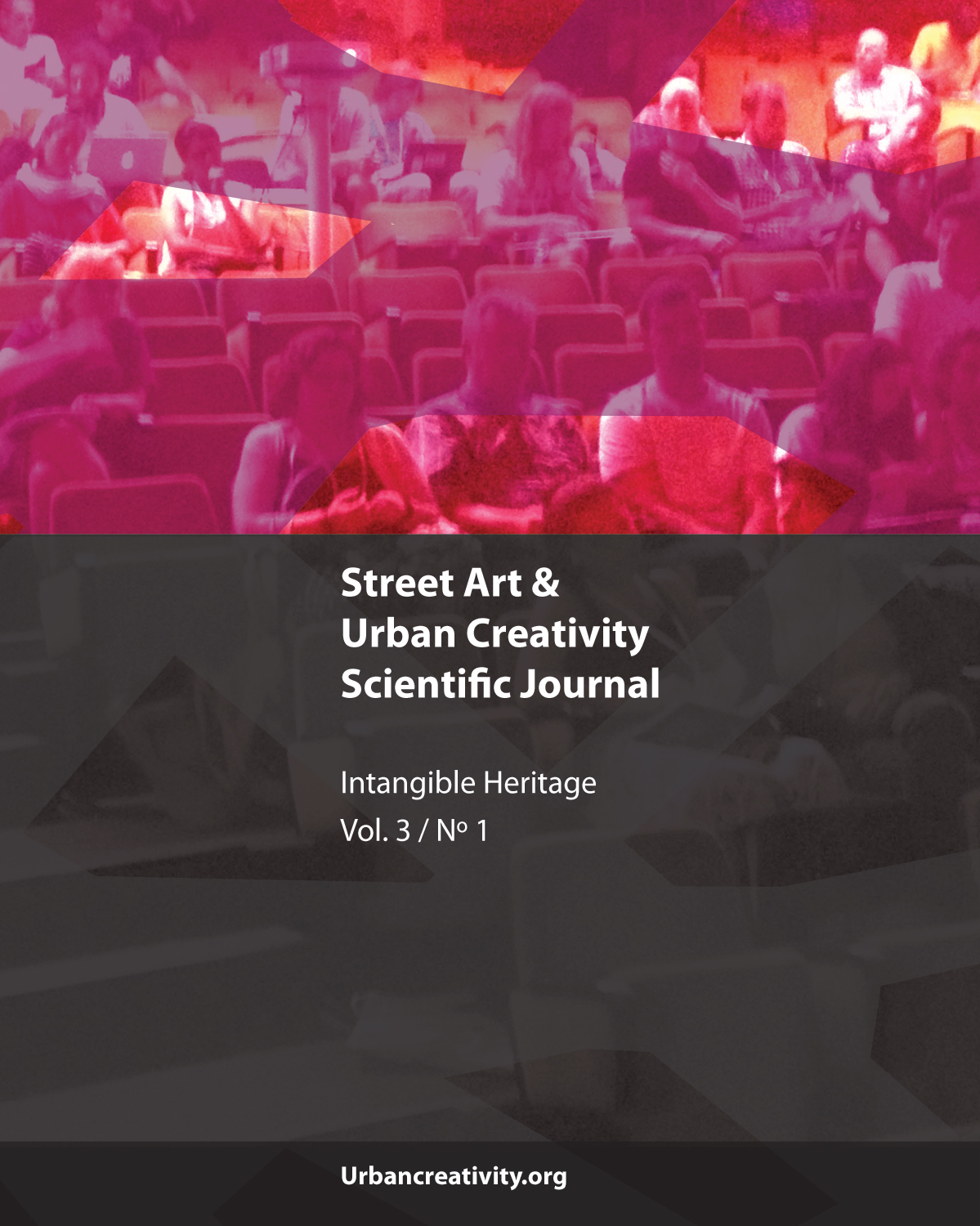Street art, heritage and embodiment
DOI:
https://doi.org/10.25765/sauc.v3i1.62Palabras clave:
Street art, Heritage, More-than-representational, Everyday life, Affect, EmbodimentResumen
In recent years, street art and graffiti have been framed as items of cultural heritage. However, until now, there has been no clear agreement on the definition or conceptualization of street art as heritage. This research presents limitations of the conventional approaches to heritage and argues that street art and graffiti does not represent a dichotomy between tangible and intangible heritage or people and object, but instead represents an inseparable relationship of the two. This study calls for greater engagement with more-than-representational approaches in studying the relationship between street art and heritage. More-than-representational approaches address street art’s crucial relationships with everyday life and change, as well as its relational, performative, embodied and affective components. Based on more-than-representational approaches, this research conceptualizes street art as a heritage experience in terms of embodiment, affect and everyday performativity. Furthermore, by situating the concept of embodiment within the case of Bergen, Norway, the paper provides an example of how the reasons and meanings behind the preservation of street artworks can be captured within a local context.
Descargas
Estadísticas globales ℹ️
|
150
Visualizaciones
|
50
Descargas
|
|
200
Total
|
|
Descargas
Publicado
Cómo citar
Número
Sección
Licencia
Los autores/as que publiquen en esta revista aceptan las siguientes condiciones:
- Los autores/as conservan los derechos de autor.
- Los autores/as ceden a la revista el derecho de la primera publicación. La revista también posee los derechos de edición.
- Todos los contenidos publicados se regulan mediante una Licencia Atribución/Reconocimiento-SinDerivados 4.0 Internacional. Acceda a la versión informativa y texto legal de la licencia. En virtud de ello, se permite a terceros utilizar lo publicado siempre que mencionen la autoría del trabajo y a la primera publicación en esta revista. Si transforma el material, no podrá distribuir el trabajo modificado.
- Los autores/as pueden realizar otros acuerdos contractuales independientes y adicionales para la distribución no exclusiva de la versión del artículo publicado en esta revista (p. ej., incluirlo en un repositorio institucional o publicarlo en un libro) siempre que indiquen claramente que el trabajo se publicó por primera vez en esta revista.
- Se permite y recomienda a los autores/as a publicar su trabajo en Internet (por ejemplo en páginas institucionales o personales), una vez publicado en la revista y citando a la misma ya que puede conducir a intercambios productivos y a una mayor y más rápida difusión del trabajo publicado (vea The Effect of Open Access).













